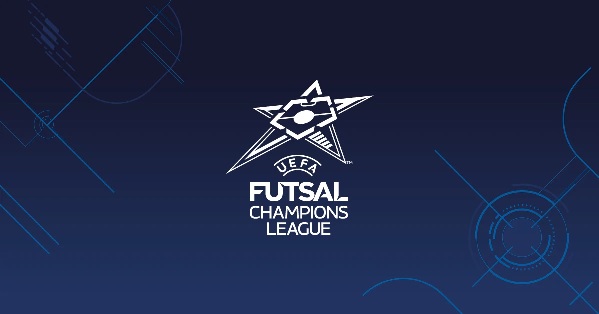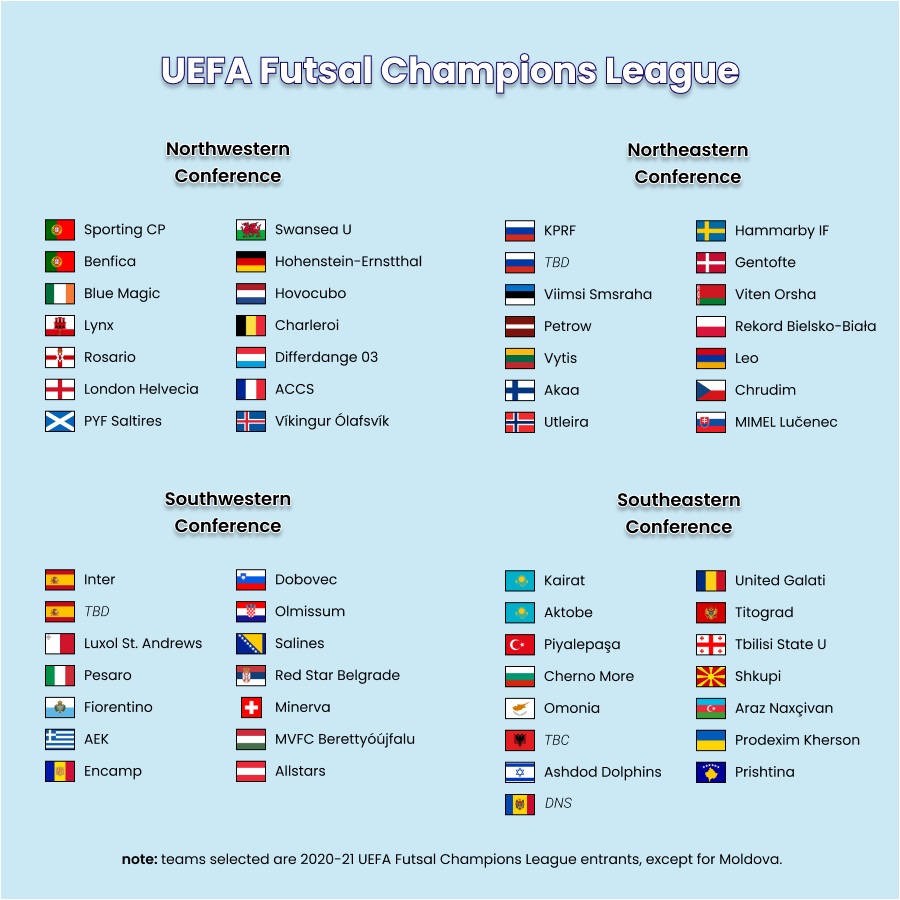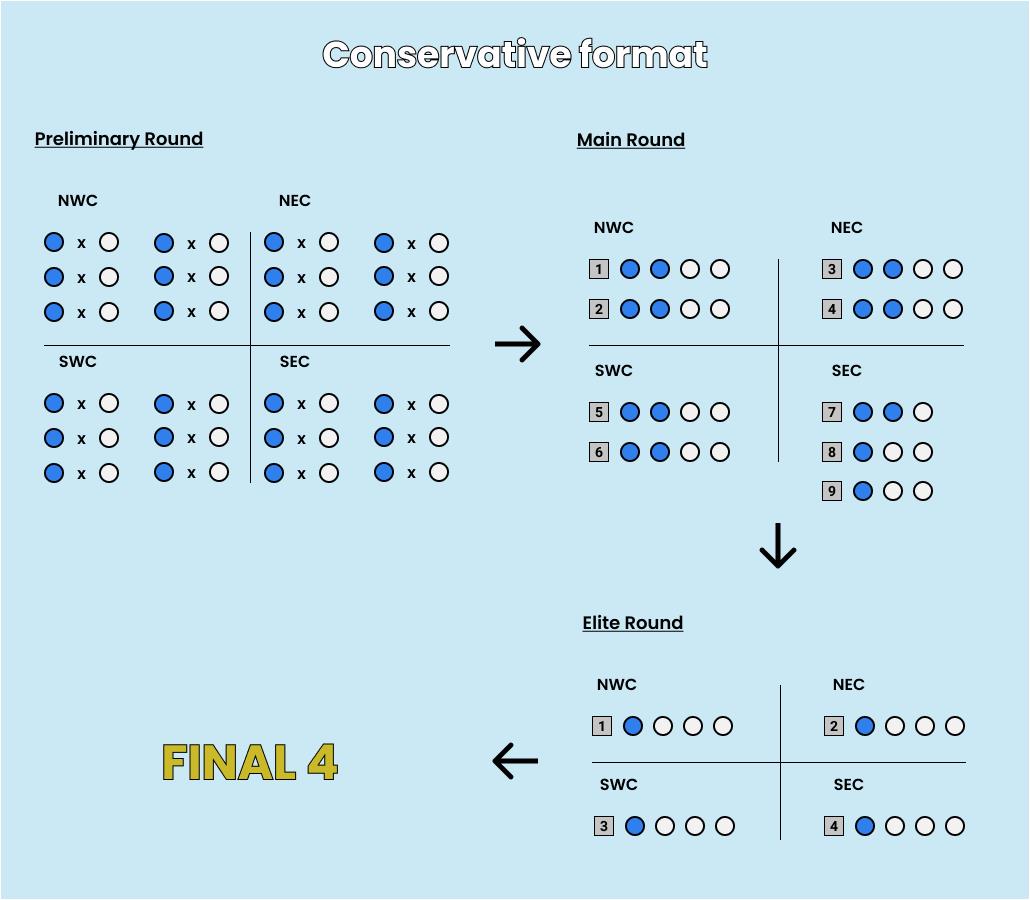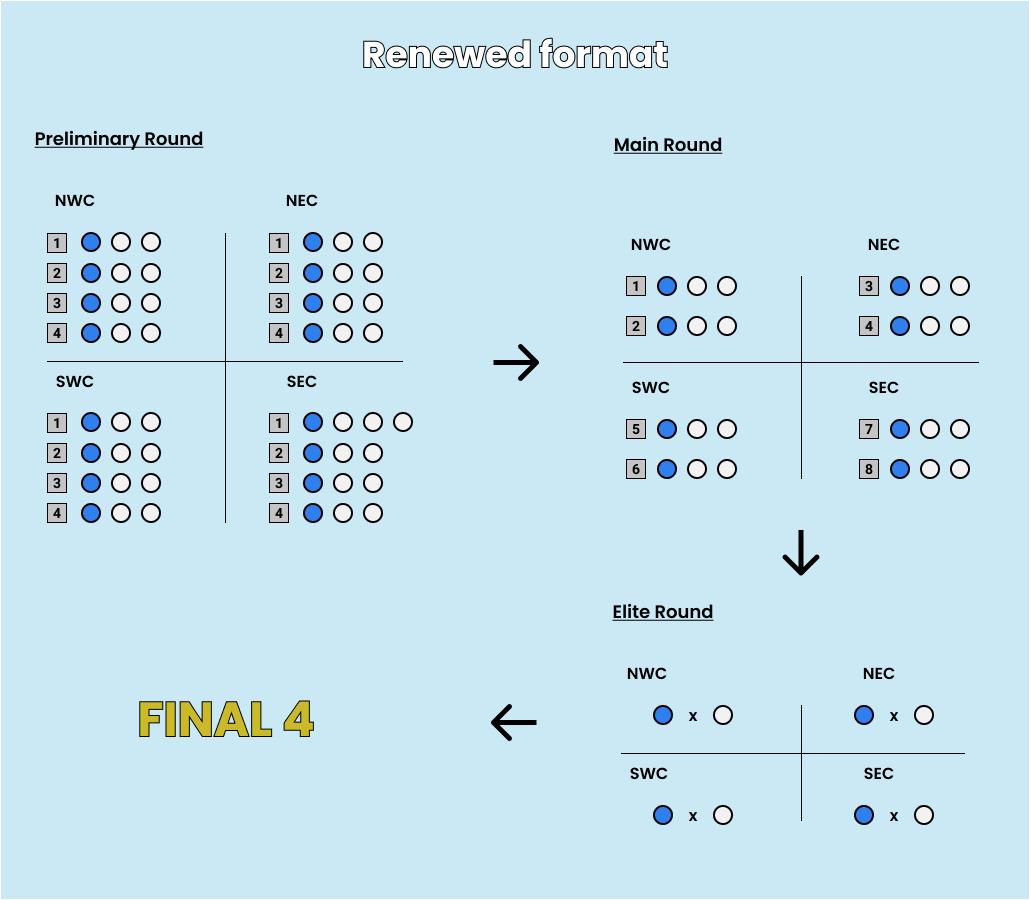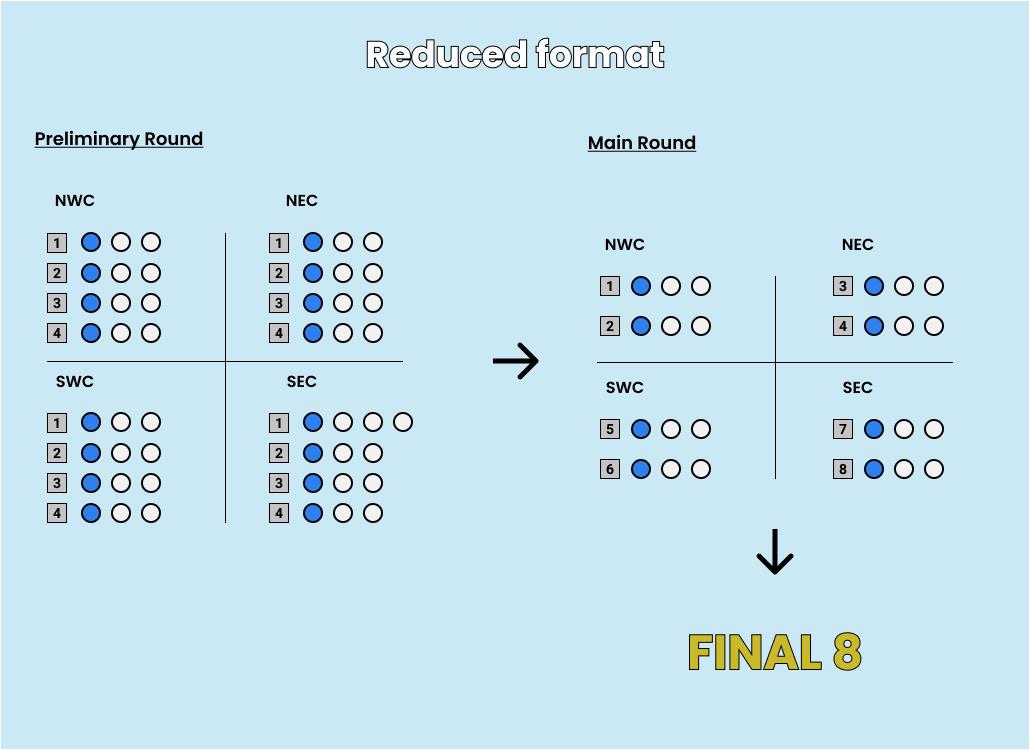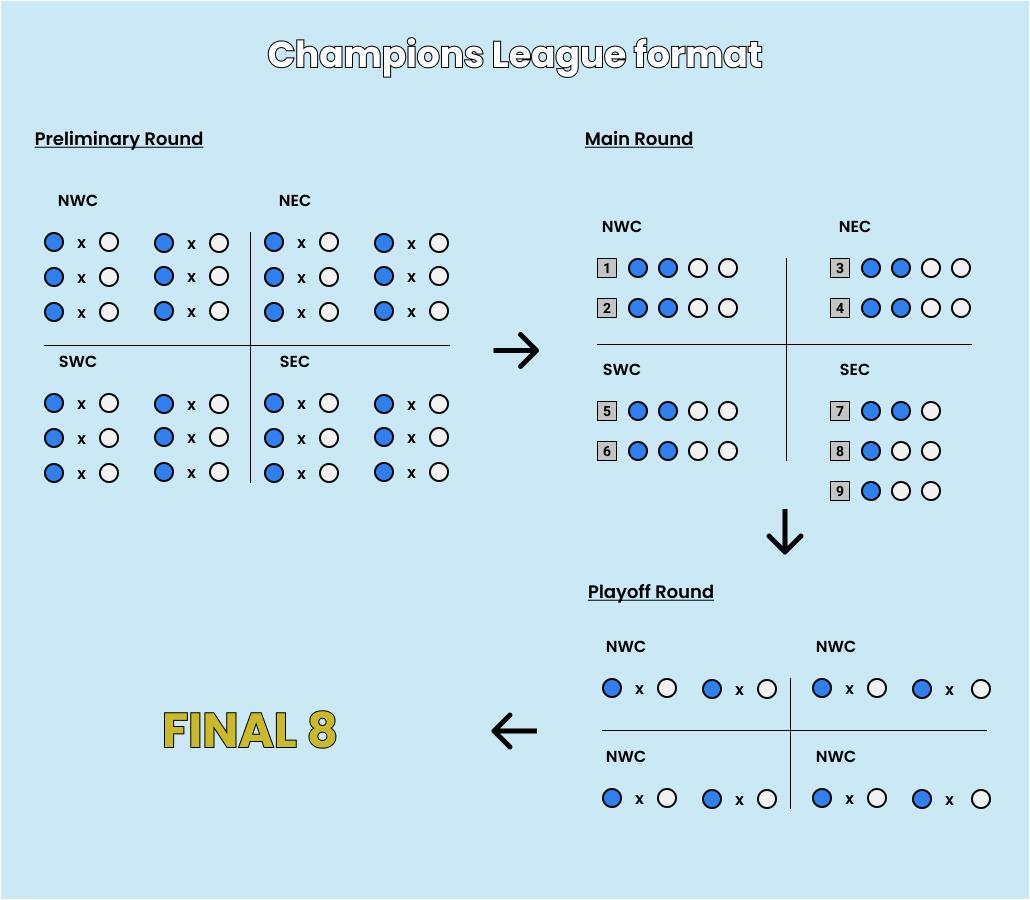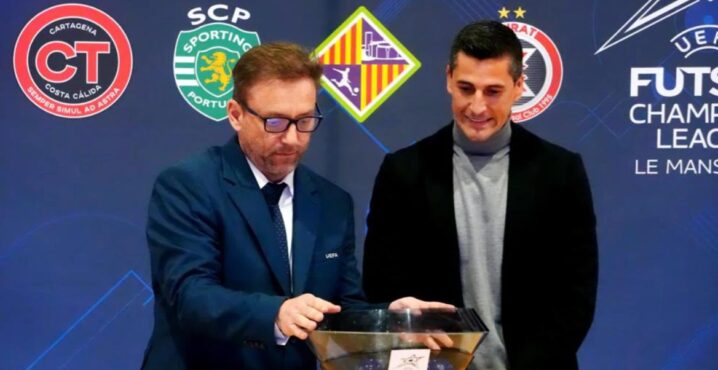Estimated reading time:7 minutes, 39 seconds
This article was created by Valerio Scalabrelli exclusively for Futsal Focus followers to read and discuss. Valerio is a former regional futsal player and youth futsal coach from Rome, Italy. After his career as a player and coach in order to graduate in Digital Media Communication, he currently works as a social media manager and studies graphic design. Nevertheless, he never gave up on futsal, occasionally writing blog posts and tweets about the Italian Serie A and worldwide issues, sharing personal opinions and thoughts as well.
The 2020/21 UEFA Futsal Champions League is the 35th edition of Europe’s premier futsal club tournament, and the 20th edition organized by UEFA. It is also the third edition since the tournament was rebranded from the “UEFA Futsal Cup” to the “UEFA Futsal Champions League”. However this season, due to the COVID-19 pandemic the format of the tournament will be different to previous editions.
Recently, UEFA finally released the official format that will be adopted for this campaign. The format is a completely new path that has taken everyone by surprise. Despite breaking from past flaws, it highlights new flaws in the organization of the knockout phase. Whether it is to help the teams reduce costs or to help the well-known teams (and maybe the well-known players, now in a different context) have guaranteed access to the final phase, it could be said this season has been saved with injury time! But, the road to growth and improvement of the most exciting club competition in the world of futsal is still a long way off, even if the direction taken is (finally) the right one.
The 2021/22 season could be the one that will increase the competition’s competitiveness, enjoyment, and visibility. This unpredictable European season that awaits us could become a pioneering period for the future of this tournament, not just a transition year until we are back to “normality”. We also know what went wrong with the past format: the Main Round became a mess with the introduction of Path A and Path B, sweeping away equal opportunities to rise and upset predictions; the outcome is the same in the Elite Round due to just 4 qualifying spots being contested between 16 teams. Now, the one-off knockout ties could show the same flaws; there’s room for improvement.
Paying attention to the criteria UEFA adopts for its football competitions and taking into account the need for economic sustainability and geographical proximity to facilitate safe travel and meetings between teams, I have tried to come up with some reforms that could be useful for the smooth running of the tournament. Let’s start!
Conferences and allocations
First, I would like to show the tournament structure. If we talk about geographical and geo-political criteria, following the UEFA provisions on draws and team allocations, the ideal solution is to introduce 4 conferences, to which I have given the name of North-Western (A), North Eastern (B), South-Western (C) and South-Eastern (D). Europe’s geographical map, however, wouldn’t favour a correct qualitative and quantitative balance, so I took the freedom of moving certain teams to certain groupings, always taking into account the territorial distance and the political conflicts existing between some participating nations.
The teams haven’t been listed according to the official ranking, except for the first two of each conference, the only ones belonging to the same association. I have developed two possibilities of creating a unique path that doesn’t depart from the original destination being the Final 4 which I’ve called the ‘Conservative format’ and the ‘Renewed format.’ But, the idea of a Final 8 must not be set aside, because it can potentially be a very high engaging and enjoyable event. So let’s jump into these proposals!
Conservative format
This format goes beyond the current one by adapting the sequence of phases to the geographical conferences. Teams are divided into Tier 1 (those 2 belonging to the same association), Tier 2 (the seeded ones of the Preliminary Round) and Tier 3 (unseeded ones of the Preliminary Round). In the South Eastern conference, for this one and the UCL format (which I’ll show as the last proposal), 1 more team (according to the official ranking) will join Tier 1. As mentioned, it all starts with the Preliminary Round in October: home/away matches between Tier 2 and Tier 3 teams of each conference (48 in total); the 6 winners (24 in total) will join Tier 1 teams in the Main Round, to be held in November. In the Main Round, 32 teams (8 for each conference) will be drawn into groups of 4 teams each except for the South Eastern conference, which will feature 3 groups of 3: in this round, Tier 1 teams are seeded and placed at the top of each group, while the others will be unseeded. The first two of each group of 4 plus the winners and the best second team of the South Eastern conference will qualify for the Elite Round. The Elite Round in December will see 4 groups of 4 teams each, where the first placed ones will enter the Final 4. In the image below, there is an example of how this system would work (blue dotted teams are those qualified for the next stage).
Renewed format
The renewed format, while maintaining most of the actual structure will adapt the sequence of phases to a new groups organization. As in the conservative format, the teams classified from position 3 to 14 of each conference will be subdivided into tiers, but there will be 3: Tier 2, Tier 3 and Tier 4 will take part in this phase. Also, the method changes: 4 groups of 3 teams for each conference plus 1 group of 4 (only in the South Eastern conference) from which the winners will move on to the next phase. In the Main Round, 24 teams will be divided into groups of 3: 2 for each conference, therefore 8 in total, where Tier 1 teams are seeded and placed at the top of each group, while the others will be unseeded. The winner of each group will qualify for the Elite Round, where a series of home/away matches, officially the Round of 16 and Quarterfinals will decide the 4 finalists that will travel to the final stage.
Reduced format
In case UEFA prefers to turn to sustainability and therefore to help teams reduce travel costs, then the reduced format is the ideal one. The procedure is similar to the renewed format: the teams related to the three tiers below the first one (which, remember, belong to associations with two teams) will start with the Preliminary Round, where 4 winners of the 4 groups of 3 teams (per conference) plus the winner of the group of 4 (in the South Eastern Conference) will advance to the Main Round. The difference, here, is that there isn’t another step to make before the grand event. The 24 teams participating in this round will be distributed into groups of 3, 2 per each conference, from which the winners (for a total of 8) will take the pass to the Final 8. Less travels, fewer costs, same pure entertainment!
Champions League format
Last but not least, the Champions League format, dedicated to the lovers of the oldest club football competition in Europe (and probably in the world). I named this format after it because the path adopted is very reminiscent of that present in the prestigious football tournament. And, it’s also a mixture of all three previous formats. This one begins with home/away matches between Tier 2 and Tier 3 teams, as explained in the conservative format, from which 6 teams per conference (24 in total) qualify; the Main Round also follows the steps of the conservative format, as the teams will be divided into 2 groups of 4 per each conference except for the South Eastern conference, which features 3 groups of 3, from which 16 teams will emerge: the first 2 placed of each group of 4 plus the winners and the best second-placed of the South Eastern Conference. And, here we come to the Playoff Round, which replaces the Elite Round, because the remaining teams, depending on their respective conferences, take part in a home/away series which will lead 8 teams to become tournament finalists.
Conclusion
These are easily implemented proposals that don’t upset the backbone of the competition but make it more competitive and participatory. The solution useful to save this season has been taken so that we can all start again after a long period of rest but it is also necessary that this choice can be the launching pad towards the future of the discipline, transforming itself into the compass that guides the rulers of this sport towards its organizational, administrative, economic and cultural emancipation.
You can read more articles about domestic futsal by going to the top navigation bar or click here
If you like this article and would like to keep updated on Futsal news, developments, etc then you can now follow Futsal Focus via Google News by following our page which will send you an alert as soon as we publish an article so please click here and follow us on Google.
You can also keep updated on Futsal news, developments, etc then please submit your email below in the Subscribe to Futsal Focus option.
Follow Futsal Focus by clicking on Facebook, Twitter, or Instagram or on the social media buttons on the website.
















![Validate my RSS feed [Valid RSS]](https://www.futsalfocus.net/wp-content/uploads/2020/01/valid-rss-rogers.png)

